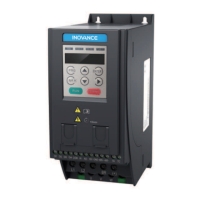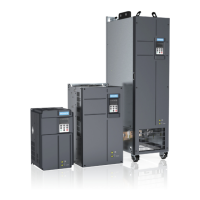Chapter 2 Product Information
- 17 -
Item Description
Individualized
functions
High performance
The CS200 implements control of an asynchronous motor by using advanced
current vector control technology.
Frequency reference
reduced when bus
voltage remains low
It reduces the frequency reference for the load to maintain normal output of
the AC drive when the bus voltage remains low, preventing the undervoltage
fault during running.
Low voltage protection
In the case of sudden bus voltage reduction or power failure, the AC drive
stops quickly and restricts the running to prevents hook gliding.
Overload protection
It automatically identies the load condition, and restricts the hoist running
after overload, but allows only the descending running.
Function parameters in
three-level menu mode
The function parameters are classied into three levels, respectively for junior
user, intermediate user and senior user.
Display of gearbox use
ratio
With the internal calculation mode of the gearbox use ratio, the current
gearbox use ratio is displayed to users.
Brake time sequence The brake time sequence control specialized for the crane is provided.
Load overspeed
judgment
The AC drive has the stall pending protection function.
Integration control
The internal logic specialized for construction elevator simplies the design of
the control cabinet.
Multi-type faults and
alarms
The output fault type and the corresponding troubleshooting methods are
provided.
Advanced background
software
It supports the parameter operation and virtual oscilloscope function of the AC
drive.
Throught eh virtual oscilloscope, you can implement graphic monitoring of the
AC drive state.
Static auto-tuning of
motor parameters
It supports static auto-tuning of all the motor parameters.
Weighing function
The AC drive can automatically calculate the current load weight according
to the analog input of the external weighing sensor and has the overload limit
function.
Operation
Command source
Operation panel control
Terminal control
Frequency source Multi-speed
Input terminals
Standard:
Five digial input terminals
Two analog input (AI) terminals, one of which supports only 0 to 10 V input,
and the other supports 0 to 10 V voltage or 4 to 20 mA current input.
Output terminals
Standard:
Two digial output terminals
One relay output terminal
One analog output terminal, supporting output of 0 to 10 V voltage or 0 to 20
mA current

